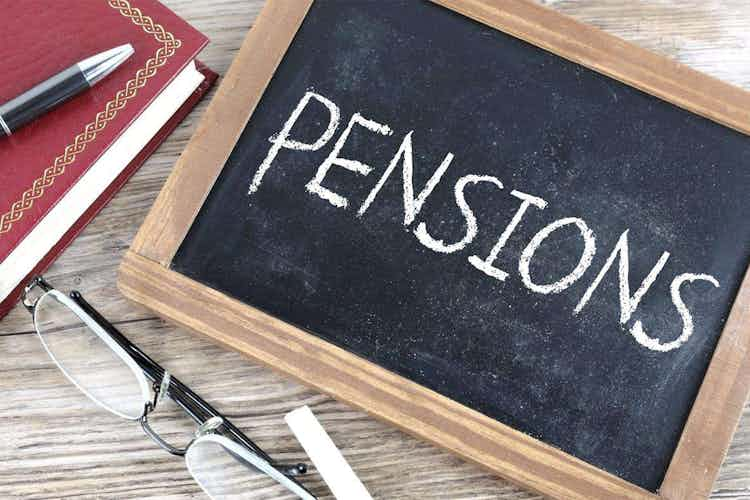Pension costs vary between providers, but one thing is sure, they are unavoidable!
Most mainstream pension providers offer reasonably straightforward and competitive rates. However, there is still plenty of variance between providers and understanding pension costs is the only way to avoid nasty surprises.
Maximise your retirement fund with our panel of pension providers. Click on your chosen provider to get started!
What are pension charges?
The main aim of a pension is to save your money for long-term growth, providing a return for the money you invest.
After all, there’s a reason people invest in pensions rather than keeping their money in cash savings; it helps them grow their money and beat inflation.
Pension charges directly influence how much your pension pot will be worth in the future.
The Telegraph recently estimated that 49% of UK pension savers currently pay ‘expensive’ pension fees of over 1%.
Your pension pot may grow by 5% or more per year, depending on the fund’s performance. But, if you're paying 1% - 2% fees on that growth, your pension's long term viability will quickly dwindle when you factor in inflation.
Fees vary between providers and are often difficult to calculate - you need to know what fees you’re looking for and how to find them.
What pension charges am I paying?
Pension fees vary between providers and pension types.
Pension fees apply mainly to personal/private/individual defined contribution (investment-based) pensions and not defined benefit (salary-based) pensions.
Fees also differ depending on whether your pension is a standard defined contribution personal pension (where the pension provider manages and administrates the entirety of your pension) or a SIPP (where you semi-manage your investments and funds).
In most cases, the main pension fee is the annual management fee.
Providers take a few different approaches here, with most charging a single management fee % that varies depending on your plan. Others charge a tiered management fee that changes with the size of your pension.
Different funds may also incur varying management fees that differ with your investment types and risk.
Fees are also applied for:
- Starting a new pension (one-time setup fee)
- Exiting your policy (exit fee)
- Managing your money (fund charge)
- Using a pension platform or service (platform fee)
- For frozen or dormant pensions (inactivity fees).
Here is a breakdown of the various types of fees you’ll need to watch out for when choosing a pension:
Annual management fee
The most common pension fee is the annual management fee, which includes the cost of administrating your pension, including valuations, statements, and customer service.
Some providers tier their annual management fee depending on how much money is in your pension pot. These generally descend from higher costs for smaller pensions to lower ones for larger pots.
The annual management fee may be an all-in-one fee that includes the management of your funds and investments.
Ask your provider for details of their fees and always read the full terms and conditions document for any plan.
Platform fees
The provider charges platform fees to cover the use of their internet dashboard, customer service, and any other tools and benefits. The platform fee is very similar to the annual management fee but often charged on top of it.
This is one way that providers layer up smaller fees to create more considerable overall management fees.
Fund fee
The fund fee covers the management of your funds and investments. This may not apply to SIPPs, but the fund fee may take a different form (e.g. a fund service charge or use fee).
The annual management fee may include fund fees. Fund fees also tend to vary between fund types. For example, ethical or green investment funds may incur a higher fee than standard diversified funds.
Service/account/policy fee
Service, account or policy fees are more likely to apply to SIPPs. They’re similar to annual management fees.
Inactivity fees
Inactivity fees are typically paid on dormant pensions that you no longer pay into. When you stop paying into a pension, it will become inactive after a certain period.
An inactive pension account will start to incur inactivity charges that can erode your pot if you don’t transfer the money elsewhere.
Exit fees
Exit fees were once one of the most exorbitant and unfair pension fees, but that is changing.
Formerly, some providers could charge as much as 10% to exit their pensions and release their money back into their account.
In 2016, an FCA consultation ruled that pension exit fees will be capped at 1% for the over-55s.
They are now consulting on banning exit fees of any type, possibly by 2022.
As it stands, pension providers can still charge high exit fees to under-55s if they want to transfer their pensions or otherwise exit their policies. It's vital to discover the exact exit fees attached to any pension, particularly if you are under 55.
Be aware that some providers make the transferral/exit process particularly convoluted, essentially to deter people from moving their pensions. You always retain the right to exit a pension policy if you wish.
Contribution charge
Though uncommon now, some providers do still charge contribution charges. This essentially acts as a charge on your deposits to your pension pot.
In the past, contribution charges could take some 2% of the money paid into a pension! This is uncommon now but always worth checking.
Withdrawal and transaction fees
Other fees include withdrawal fees that vary significantly between different pension products (we will be covering this in detail later in the eBook) and transaction fees.
Transaction fees are usually charged when you transfer your money between different funds. These are more common for SIPPs than standard defined contribution pensions.
Pension management charges
Pension management charges typically fall into two main categories:
- Management fees
- Fund charges or fees
You may also be charged platform fees, though this is typically included as part of the management fee (may also be called an account management fee). Always check to ensure there isn't an additional platform fee charged on top of annual management fees.
Some pension providers charge just one fee, but most charge multiple fees.
It's best to try and combine your fees into one annual percentage. As a rule of thumb, your yearly pension fee should be 1% or below for a standard pension.
For example, a provider might charge you 0.5% annual management fees and 0.35% in fund charges or fund management fees. This would add up to a 0.85% yearly fee.
For example, a 0.85% total annual fee would equate to £85 of charges a year on a £10,000 pension pot.
Pension management charges explained
Pension management fees are usually charged monthly based on an annual percentage, e.g. 0.5%.
Some providers charge those with substantial pension pots less, essentially offering the highest savers a discount on their fees.
Pension fees on SIPPs are different and are usually charged for selecting and changing your investments. However, there is usually a small annual account fee, too.
Pension fees across providers are generally competitive, but there’s still plenty of variation.
Never assume that all pension provider’s fees are broadly the same as each other.
Inactivity fees: watch out!
If you have old or lost pensions, prioritise tracking them down and releasing the funds for reinvestment into a new combined pension pot.
On rare occasions, inactivity fees chargeable on frozen pensions can even put their owners into debt after eating up all of their money!
Every % matters
Pension experts from This is Money has been quick to point out that every % matters when choosing a pension provider. Even seemingly minor differences in percentage charges can amount to significant differences over many years of saving.
For example, a 2% total annual charge on a pension pot of £200,000 will incur fees of £4000 annually. If the yearly cost were 1.5%, the total yearly fees would instead be £3000.
Over 20 years, this amounts to a saving of £10,000.
Finding out your pension charges
The most comprehensive way to discover pension charges is to scour the terms and condition’s documents of your plan. Reading the entire terms and conditions is never a bad idea anyway.
You can also speak directly to any pension provider's customer service team, who will be able to break down their fee structure.
Pension fees: the devil is in the details!
As always with any financial product, reading the fine print is the key to uncovering any potential nasty surprises.
It’s worth noting that pensions are more fair and transparent now than in the past. Most significantly, exit fees have been limited to 1% for the over-55s. This may become widespread for all pension savers in the future.
Everything you need to know about pension costs
The main pension fees are the annual management charge and fund charge. These combine to produce a figure that varies between 0.5% and 1% on average.
Other fees may push this figure north of the 1% mark, namely platform fees and any one-off charges for transactions and withdrawals.
Stay vigilant of exit fees and inactivity fees, as these are particularly costly.
Image Credit: Alpha Stock Images, Original Image , CC BY-SA 3.0







